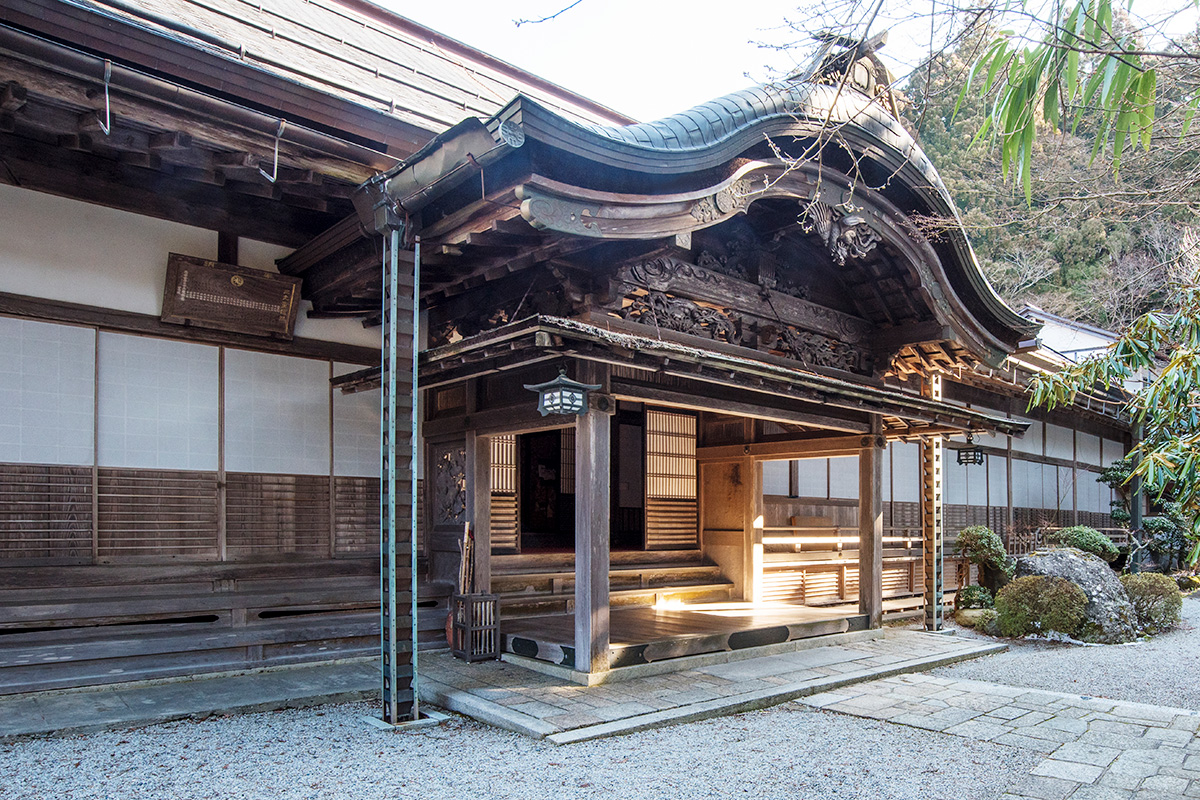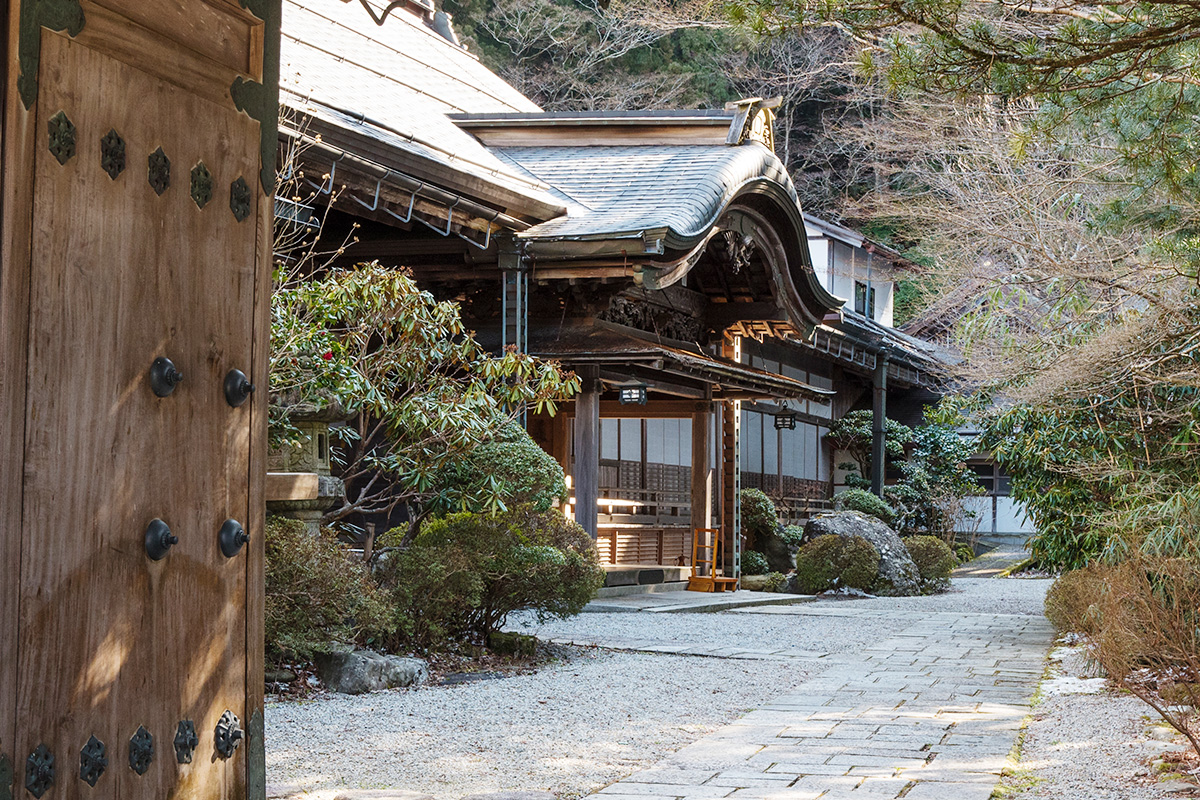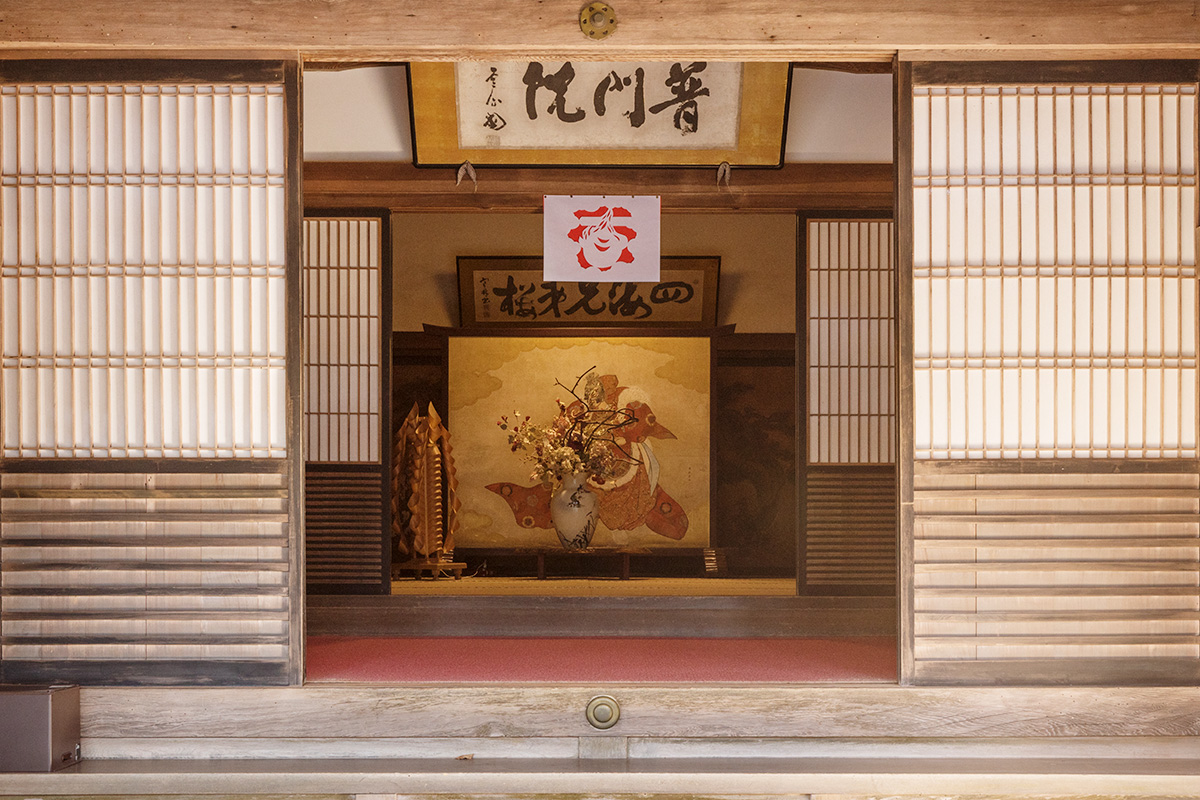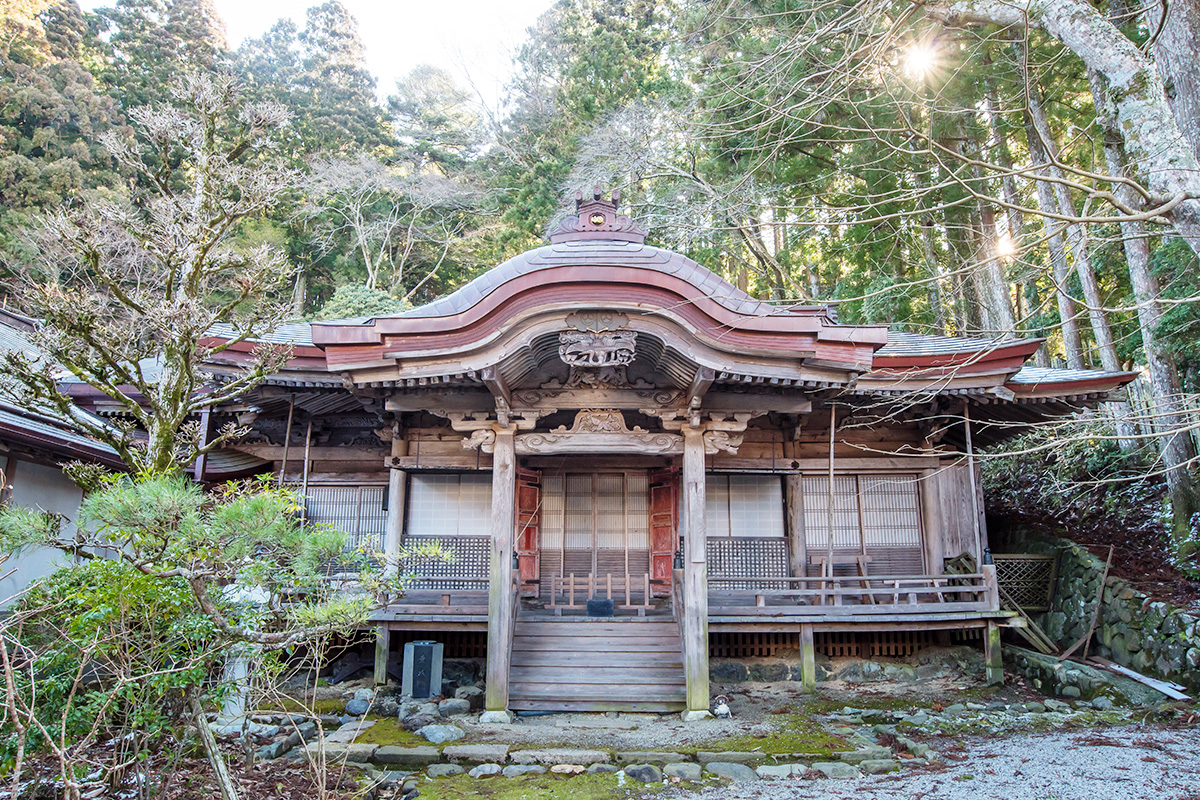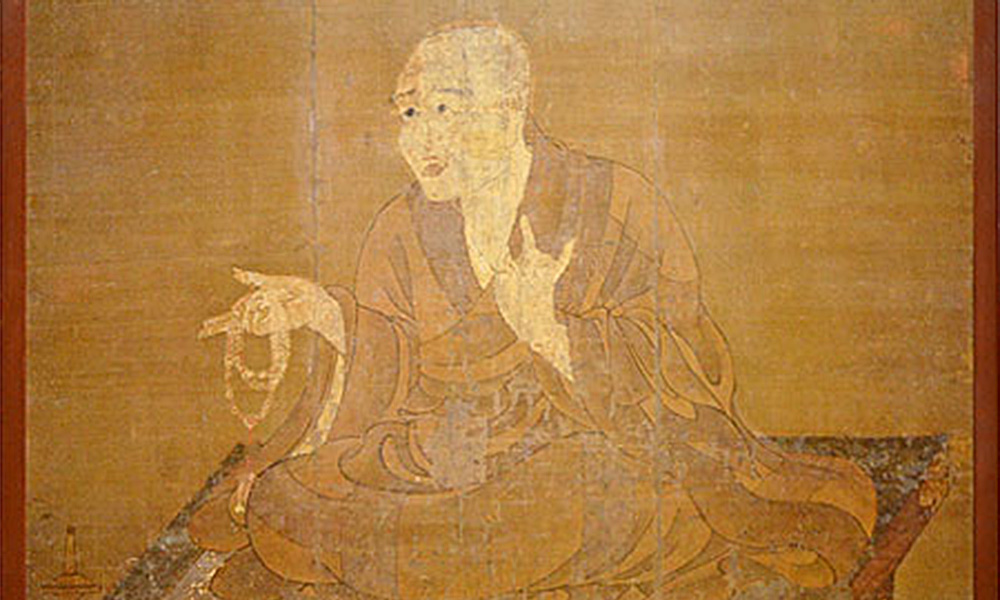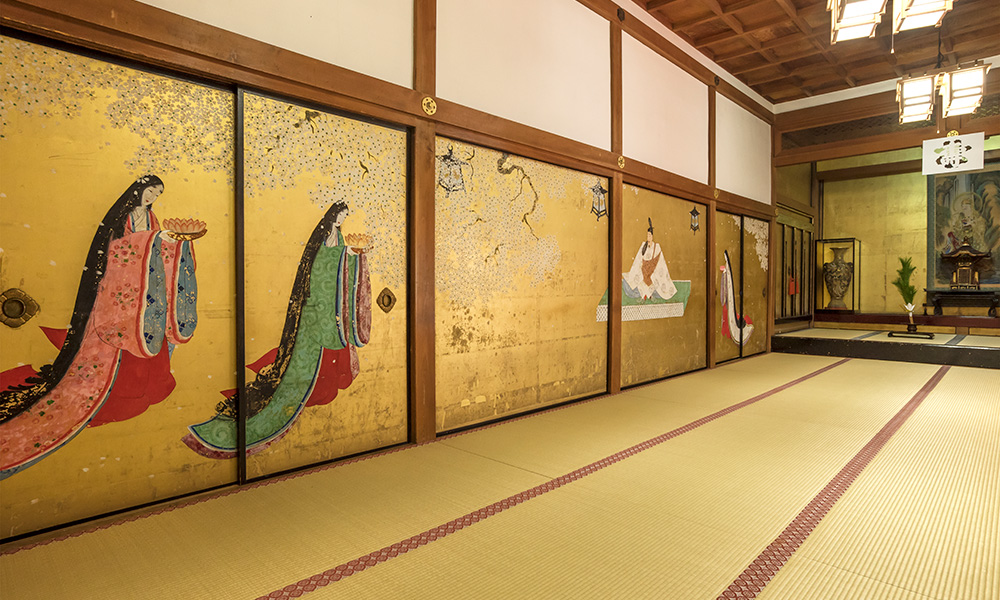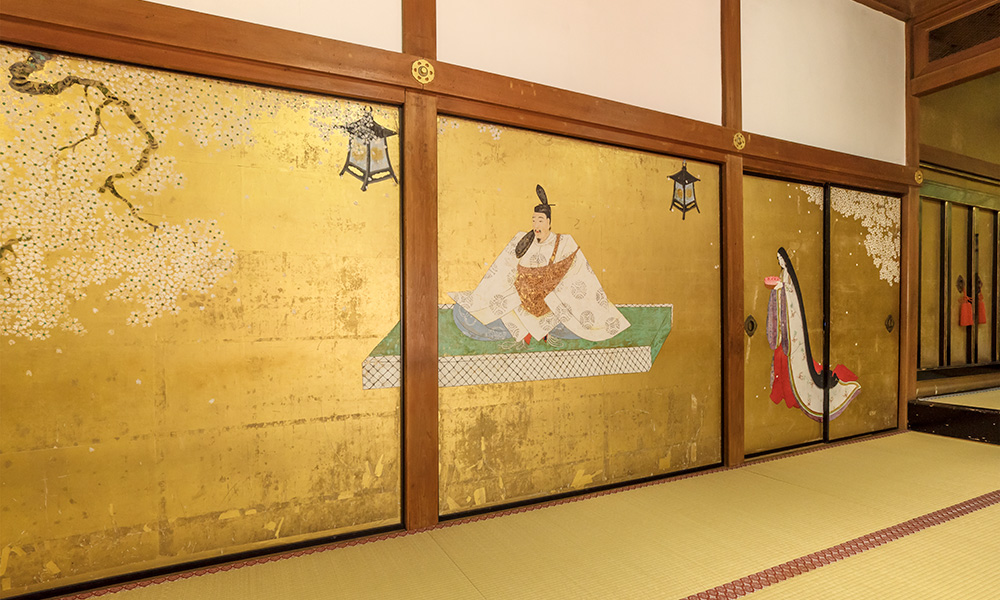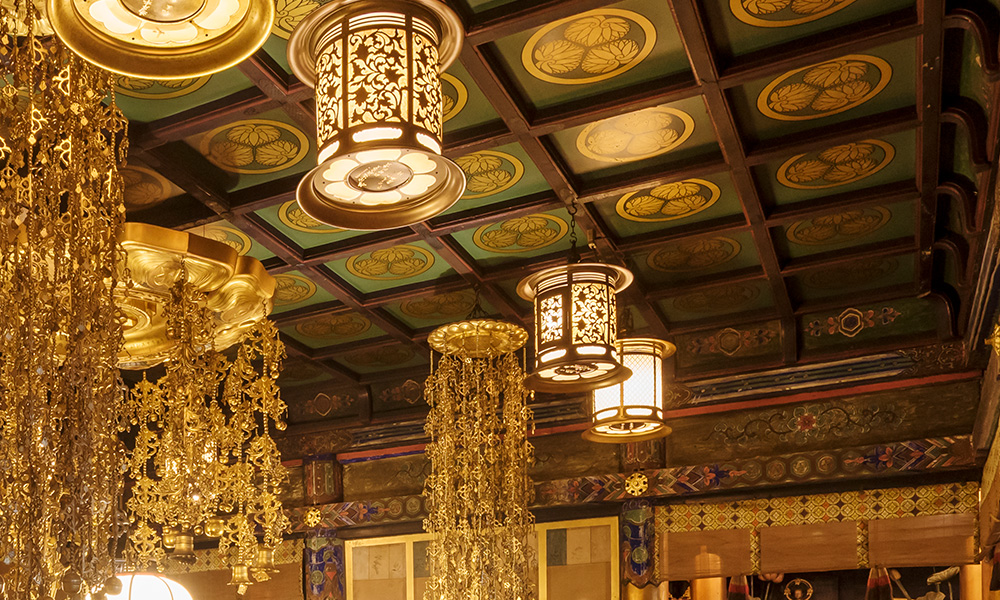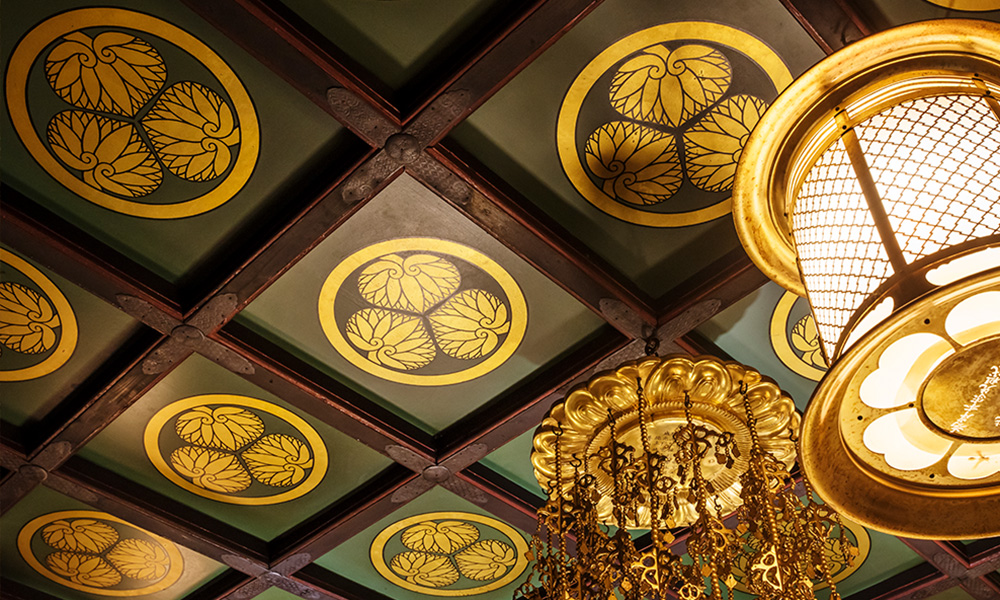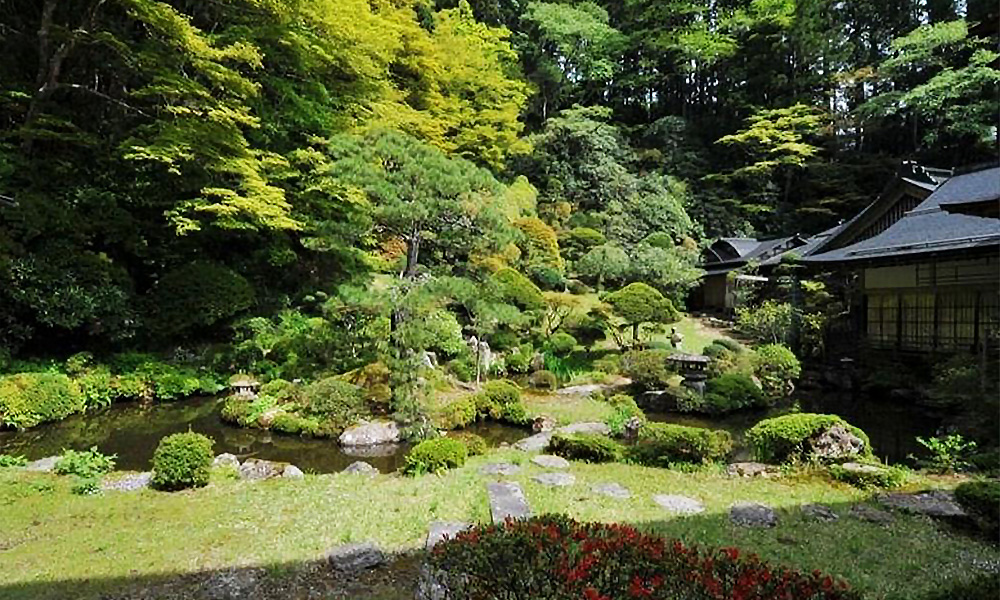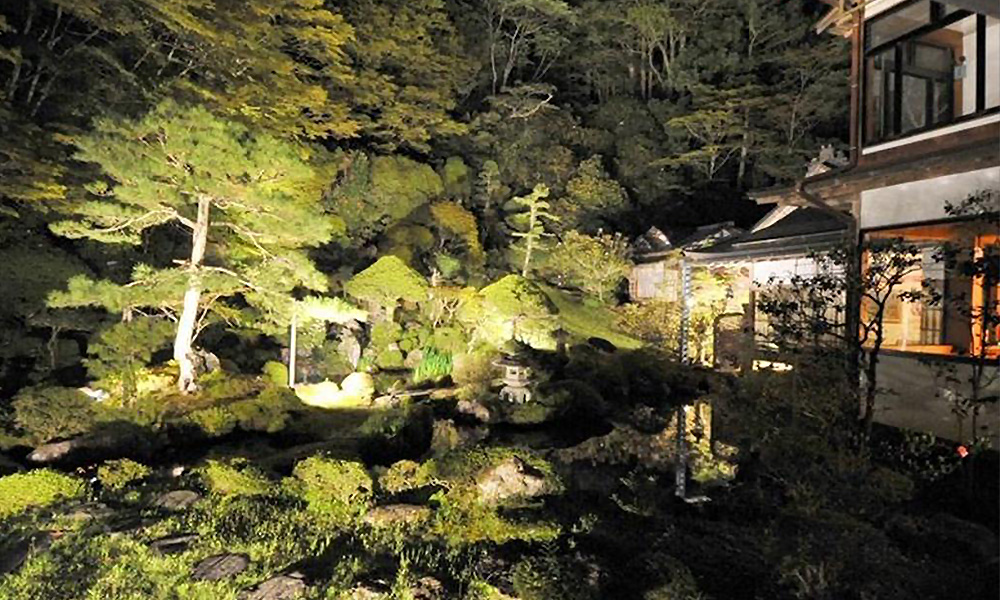Engi
Koyasan Fumonin
Gonzo Daitoku, who's Kobo Daishi's tonsure master, rejoiced in the opening of Koyasan. Building a temple on this mountain in the first year of Tencho was the beginning of our own temple.
There is a portrait (a national treasure) of Kobo Daishi holding an originally written inscription remembering his scholar who was famous in the southern capital.
Main Hall
Koyasan was opened by Kobo Daishi in the year 816 (Konin Era Year 7), and to this day the light of its teachings has been passed down.
>>>In its history, the Koyasan fire broke out in 1888 (Meiji Era Year 21) and burned many temples and villages that were lined up on the hill, completely destroying the Koyasan.
Our temple also burned down at that time, but was able to be rebuilt to a degree, but not fully. This included the main hall.
Furthermore, the old front shrine of Tokugawa Clan Mausoleum later relocated to Koyasan at its current location. The principle buddha is Dainichi Nyorai, the Buddha of the Shingon sect, but it is also called the Dainichi Nyorai of Fumon Mandoku, in which our temple's name originated from.
Our Treasure
The Image of Gonso Daitoku (National Treasure)
Color Painting on Silk H166.4 x W136.4cm
Gonso (754-827) was a high priest of the Sanron sect and was one of the first scholars in the early Heian period (12th century).
He also gained respect as a benevolent practitioner, including setting up the Monjukai to help the poor with alms.
It is said that Kukai was awarded the Kukuzo Gumonjiho in Enryaku era year 12 (793).
The inscription at the top of the image is a memorial sentence from Kobo Daishi Kukai when his disciples built a wooden statue after the death of their master to pray for him.
Since the original is kept at the Reihokan, a photo is posted in the main hall.
Raised Floor
The raised floor is used for the main events at Koyasan temple as a front room. It is usually used as a lunch venue or a break room since it faces the garden.
The sliding door paintings reproduce the cherry blossoms viewed by Taiko Hideyoshi. Rare princesses are drawn at Koyasan.
Main Hall Ceiling
The main hall was reconstructed from the main hall of Toshogu Shrine, which used to be on the north side of Kongobu-ji Temple, after the government sold the property.
Around 1650, it was built with reference to the Nikko Toshogu Shrine.
The pillars are painted in gold, and the colors are still rich.
Fumoin Garden
According to the archive, the Fumoin Garden was constructed by the feudal lord of Matsuyama Castle, Kobori Enshu. A stepping stone was struck from Shoin (the drawing room), and a stone bridge made of natural stone from Kishu was built over the pond to reach Kameshima. There is also a way from the stone bridge over Dejima to the back of the main hall.
The pond is in indented form, with Kamejima in the middle of the pond and Dejima (Tsurushima Island) in the south (on the right). Above it, there is a dry waterfall made of triad stones, and the flow of it connects the upper and lower dry waterfalls, creating a dry stream of pebbles. With a lot of pruning throughout the mountains, the mountains in the south have artificial hills, perhaps with a pictorial representation.

